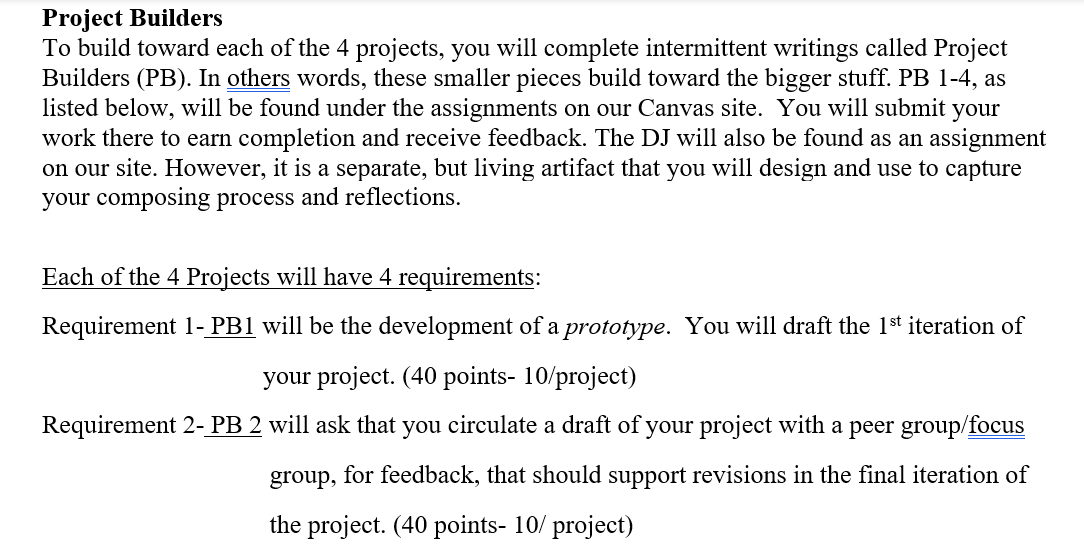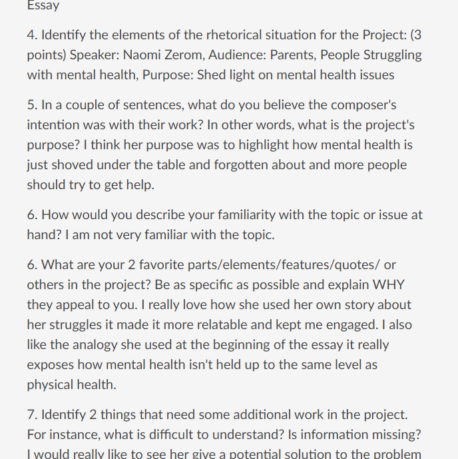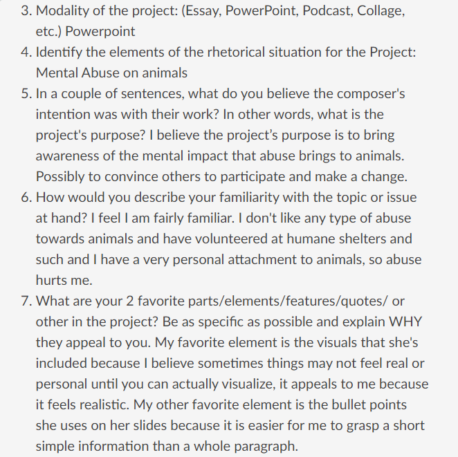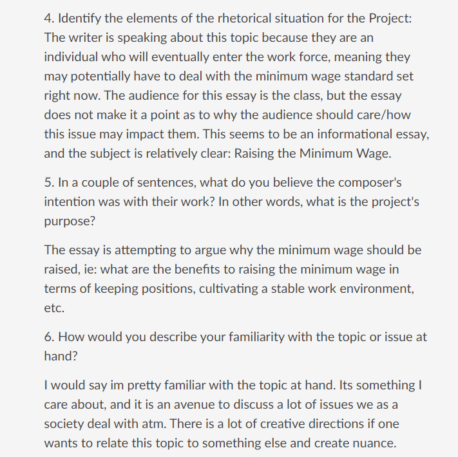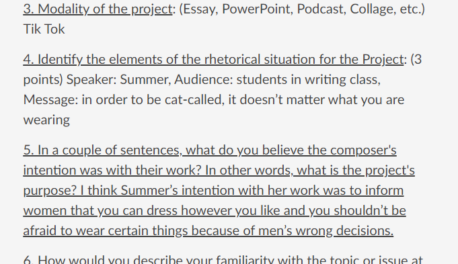
project builder 2 (pb-2)
test
Project 1– “Making a Thing” asked students to identify a problem or issue of their choosing, not assigned by the instructor. Then, they were to develop an original artifact that attended to the problem or issue address fellow peers in our classroom.
The Project Builder (2) in Project 1 asked that students test their prototypes by sharing their 1st drafts with me. In turn, I evaluated their work according to the objectives of the rhetorical analysis assignment. I provided feedback specific to the student writer’s ability to effectively address their intended audience and purpose. With my feedback, the student writers redrafted the prototype to share with their peers in class. The protocol for peer review is linked below.
excerpted from canvas assignment:
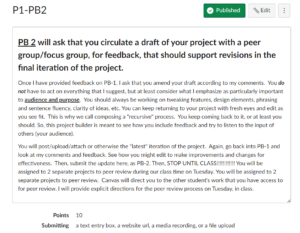
excerpted from canvas assignment (Peer review protocol):
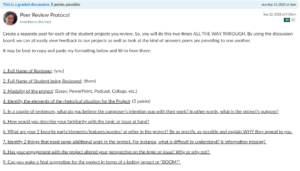
lesson excerpted from class discussion on modal aptness:
link to transcript of audio
Project 2– “Pulling a Thing Apart” asked students to break an existing artifact down to a set of features or components for rhetorical analysis. The subject matter could depart from the content of Project 1.
Testing in Project 2 focused on the student’s ability to identify and analyze rhetorical strategies used by the producer of their chosen artifact. It was a layered testing exercise in that peer reviewers had to qualify the student writer’s ability to clearly and effectively discuss another writer’s work. First, the peer reviewer should have had a clear picture of the artifact, its purpose, and 3 distinct rhetorical elements that helped it to be impactful. Secondly, the peer reviewer had to assess how the student writer analyzed the 3 distinct rhetorical elements in order to make a clear point about the artifact. The answers in the protocol (linked below) would inform the student writer’s final iteration of Project 2.
excerpted from canvas assignment:
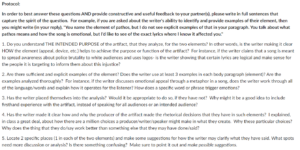
Project 3– “Discussing Things” asked students to resituate the kind of work they had done previously in Projects 1 and 2 by creating a new artifact that performed an argumentative function in a public space. Students were expected to employ some of the rhetorical strategies analyzed in Project 2 by other producers.
The 2nd Project Builder of Project 3 intended to make certain that student writers had a logical organization for their argumentative piece. Because they were expected to employ some of the same rhetorical strategies that other writers had used and students had analyzed, it was important to also check for evidence of the student writer’s perspective and voice in their artifact.
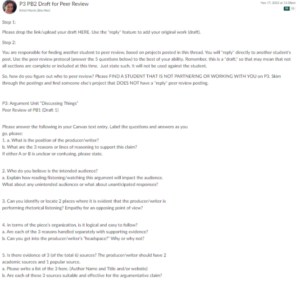
Project 4– “Putting a Thing Back Together, Better” asked students to return to their work in Project 1 equipped with a fresh set of knowledge, tools, and inspiration. They had to redesign their Project 1 by choosing a new modality and new target audience for the redesigned artifact.
Testing the redesign of Project 1 centered on how the student writer was able to reframe the topic or issue for a new audience. Were student writers contributing to the larger conversation? Peer reviews were meant to tease out elements that were unclear or misleading. Project 4 had to show that the student writer thought carefully about modal aptness.
